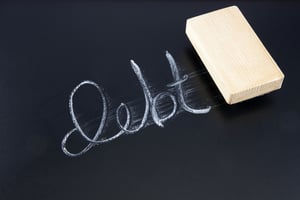 Typically, you can’t get rid of tax debt in a Chapter 7 bankruptcy. But, if you can afford the payments, then a Chapter 13 bankruptcy is a great tool to help you with this type of debt. This is because you’re allowed to pay your tax debt through a Chapter 13 repayment plan, which lasts 3 or 5 years. Even if your tax debt is considerably large, filing a Chapter 13 may still make financial sense, since you’re not incurring interest and penalties during your bankruptcy. Plus, you’re not paying back your credit credits, unsecured loans, and medical bills, and those debts will go away once you’re finished with your Chapter 13 plan!
Typically, you can’t get rid of tax debt in a Chapter 7 bankruptcy. But, if you can afford the payments, then a Chapter 13 bankruptcy is a great tool to help you with this type of debt. This is because you’re allowed to pay your tax debt through a Chapter 13 repayment plan, which lasts 3 or 5 years. Even if your tax debt is considerably large, filing a Chapter 13 may still make financial sense, since you’re not incurring interest and penalties during your bankruptcy. Plus, you’re not paying back your credit credits, unsecured loans, and medical bills, and those debts will go away once you’re finished with your Chapter 13 plan!
A few notes – make sure you’ve filed your tax returns within the last four years. One reason why is because it’s required, but also you want to have updated numbers with the IRS so you don’t pay more than you need to during your plan. Also, if you receive your Chapter 13 bankruptcy discharge, you may have some remaining tax debt because they were non-dischargeable and non-priority. If this occurs, then it’s recommended that you contact the IRS to setup a payment plan.
It is also important that you don’t continue to have tax debt while you’re in a Chapter 13 bankruptcy. If that continues during your bankruptcy, then the IRS may move to dismiss your case. If you’re having issues with owing the IRS, then you may need to increase your withholding on your paychecks. The IRS has a tool to help you determine what your withholdings should be -https://www.irs.gov/individuals/tax-withholding-estimator.
CALL NOW FOR A FREE STRATEGY SESSION FROM A MN BANKRUPTCY LAWYER AT LIFEBACK LAW FIRM
If you’re having issues with tax debt and thinking of filing for bankruptcy, and or if you have questions or are ready to get your life back, reach out to Minnesota’s nicest bankruptcy law firm by going to www.lifebacklaw.com. You won’t regret it!

